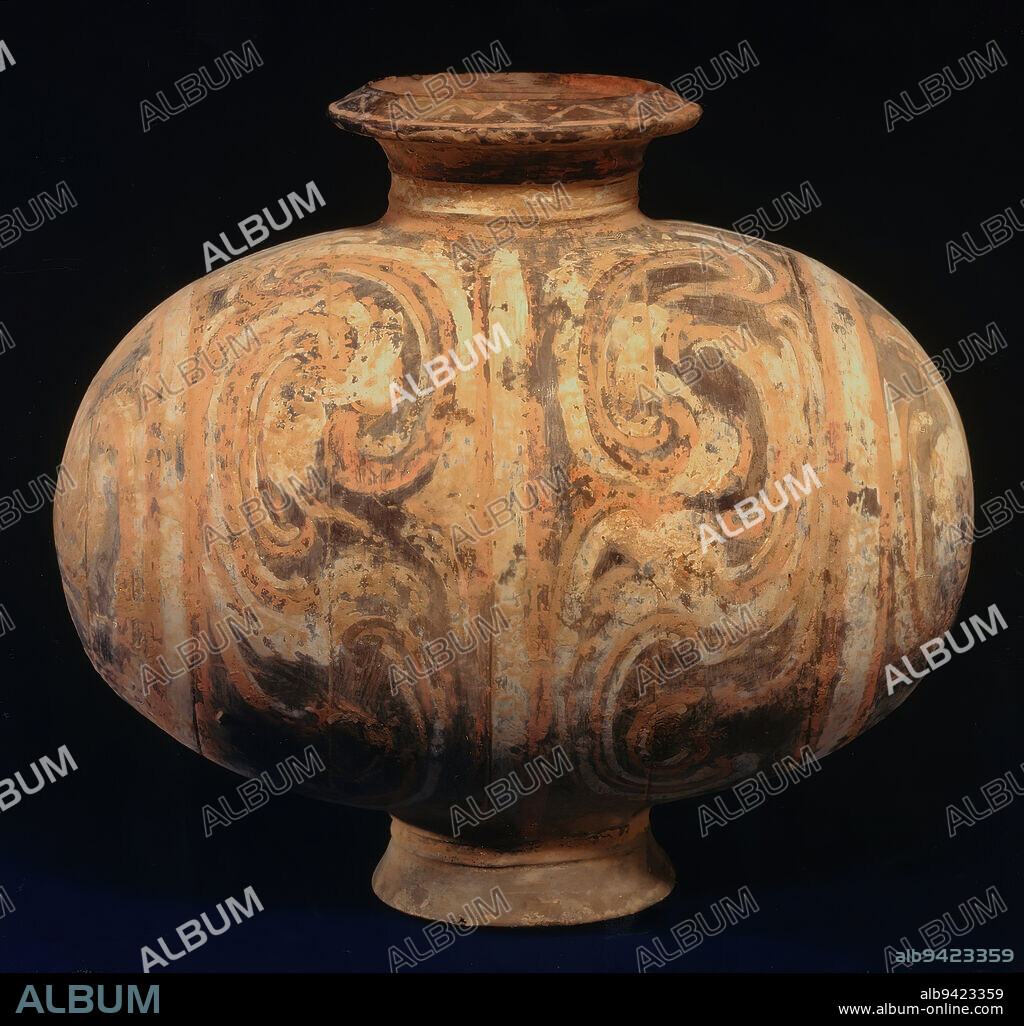alb9423359
Cocoon-shaped Jar, 3rd-early 2nd century BCE, 12 1/8 x 13 1/4 x 8 1/2in. (30.8 x 33.7 x 21.6cm), Earthenware with traces of pigment, China, 3rd-2nd century BCE, Silk production, from the rearing of silkworms to weaving silk cloth, was an important source of income to Chinese farming families. This type of jar with its elegant cocoon shape was extremely popular during the Chin (221-206 b.c.) and Western Han periods (206 b.c.-a.d. 25). Plain grey earthenware was often painted during Han. The colors used were red, brown, green, yellow, black, white, orange, and blue. Jars like this may have been used in the ritual practices of sericulture as the rearing of silkworms was fraught with superstitions during the Han period.

|
Add to another lightbox |
|
Add to another lightbox |



Buy this image.
Select the use:

Caption:
Cocoon-shaped Jar, 3rd-early 2nd century BCE, 12 1/8 x 13 1/4 x 8 1/2in. (30.8 x 33.7 x 21.6cm), Earthenware with traces of pigment, China, 3rd-2nd century BCE, Silk production, from the rearing of silkworms to weaving silk cloth, was an important source of income to Chinese farming families. This type of jar with its elegant cocoon shape was extremely popular during the Chin (221-206 b.c.) and Western Han periods (206 b.c.-a.d. 25). Plain grey earthenware was often painted during Han. The colors used were red, brown, green, yellow, black, white, orange, and blue. Jars like this may have been used in the ritual practices of sericulture as the rearing of silkworms was fraught with superstitions during the Han period.
Credit:
Album / quintlox
Releases:
Model: No - Property: No
Rights questions?
Rights questions?
Image size:
2918 x 2774 px | 23.2 MB
Print size:
24.7 x 23.5 cm | 9.7 x 9.2 in (300 dpi)
Keywords:
206 B. C.-A. D • 221-206 B. C • 25 • 3RD-2ND CENTURY BCE • 3RD-EARLY 2ND CENTURY BCE • BLACK PERSON • BLACK RACE • BLACK • BLUE • BROWN • CHIN • CHINA • CHINE • CHINESE FARMING FAMILIES • CHINESE • COCOON-SHAPED JAR • COLORS • EARTHENWARE • ELEGANT COCOON SHAPE • EXTREMELY POPULAR • FRAUGHT • GREEN • HAN PERIOD • HAN • IMPORTANT SOURCE • INCOME • JAR • JARS • NEGRA • ORANGE • ORANGES • PAINTED • PIGMENT • PLAIN GREY EARTHENWARE • PORCELAIN • REARING • RED (COLOUR) • RED • RITUAL PRACTICES • SÉRICULTURE • SILK PRODUCTION • SILKWORMS • SUPERSTITIONS • TRACES • TYPE • WEAVING SILK CLOTH • WESTERN HAN PERIODS • WHITE • YELLOW (COLOR) • YELLOW (COLOUR) • YELLOW
 Pinterest
Pinterest Twitter
Twitter Facebook
Facebook Copy link
Copy link Email
Email
